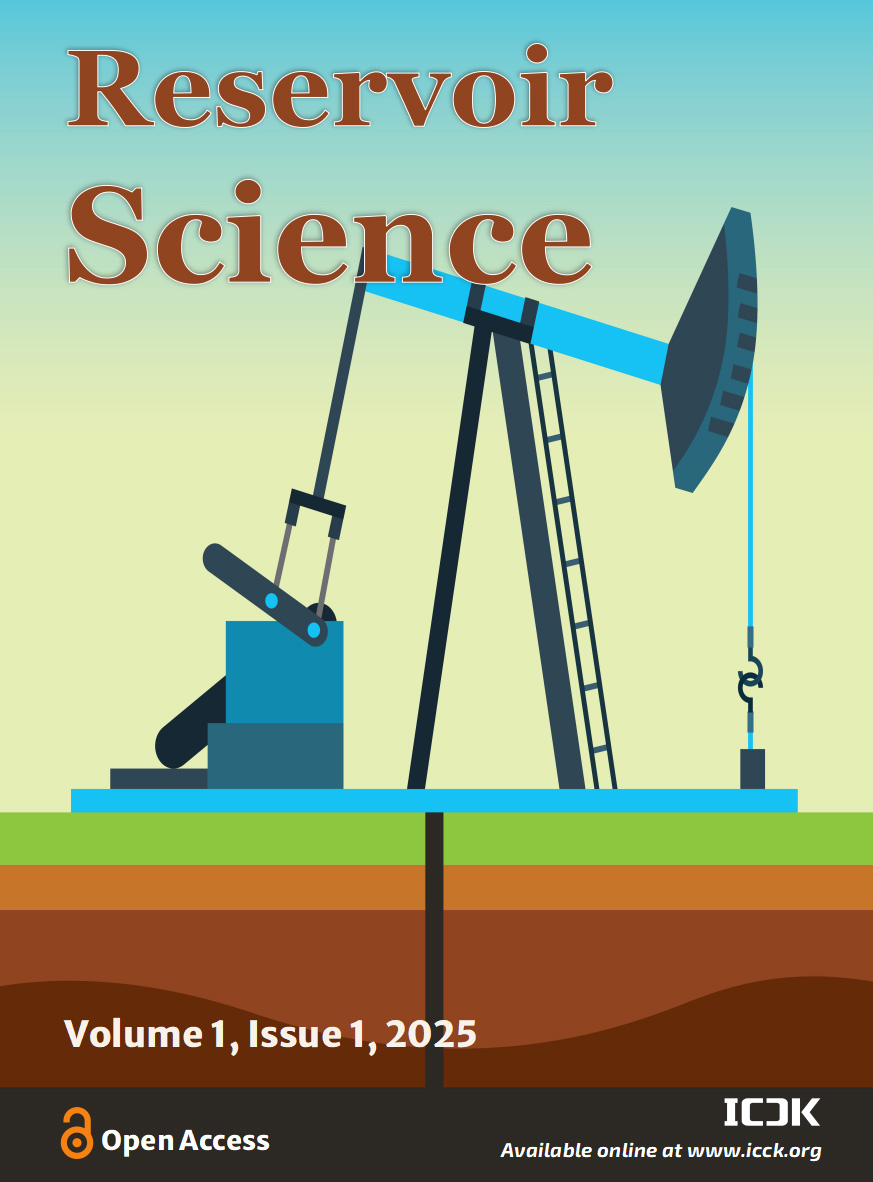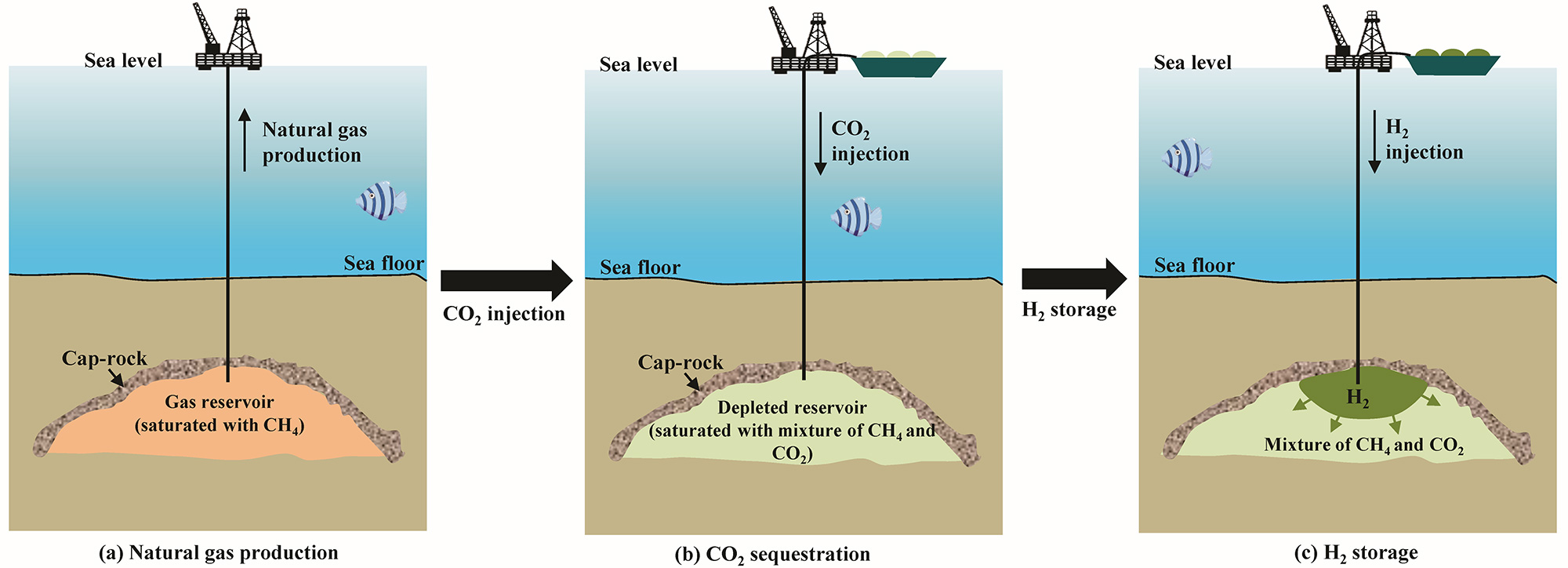Abstract
The depleted gas reservoirs can serve not only as sites for CO$_2$ sequestration but also as potential spaces for hydrogen storage. However, this process remains insufficiently investigated and thus cannot offer reliable technical support for the injection operations. In this study, a mathematical model for simulating hydrogen storage in depleted gas reservoirs was developed and numerically solved. Meanwhile, the applicability was then verified through comparison with results from previous studies. Based on this model, a detailed analysis was performed to investigate the evolution of key parameters under specific injection conditions. Finally, the effects of various factors on parameters such as hydrogen distribution and maximum pore pressure during the hydrogen injection process were thoroughly discussed. It was found that hydrogen gradually drives the CH$_4$ and CO$_2$ outward from the near-wellbore region, leading to increases in both bottom-hole pressure and pore pressure during hydrogen injection. Furthermore, as the injection progresses, the spatial extent of hydrogen distribution expands nonlinearly, and the buffering effects of CH$_4$ and CO$_2$ become prominent. Sensitivity analysis further reveals that, although low permeability-induced high pore pressure poses sealing challenges, limited hydrogen storage space within reservoir is beneficial for further hydrogen recovery. Meanwhile, a moderate increase in the injection rate can enhance storage efficiency without compromising reservoir sealing integrity. In contrast, extending the length of wellbore section used for hydrogen injection does not lead to a significant improvement in storage performance.
Data Availability Statement
Data will be made available on request.
Funding
This work was supported without any funding.
Conflicts of Interest
The authors declare no conflicts of interest.
Ethical Approval and Consent to Participate
Not applicable.
Cite This Article
APA Style
Wu, J., & Ansari, U. (2025). From CO2 Sequestration to Hydrogen Storage: Further Utilization of Depleted Gas Reservoirs. Reservoir Science, 1(1), 19–35. https://doi.org/10.62762/RS.2025.860510
Publisher's Note
ICCK stays neutral with regard to jurisdictional claims in published maps and institutional affiliations.
Rights and Permissions

Copyright © 2025 by the Author(s). Published by Institute of Central Computation and Knowledge. This article is an open access article distributed under the terms and conditions of the Creative Commons Attribution (CC BY) license (
https://creativecommons.org/licenses/by/4.0/), which permits use, sharing, adaptation, distribution and reproduction in any medium or format, as long as you give appropriate credit to the original author(s) and the source, provide a link to the Creative Commons licence, and indicate if changes were made.


 Submit Manuscript
Edit a Special Issue
Submit Manuscript
Edit a Special Issue

 Copyright © 2025 by the Author(s). Published by Institute of Central Computation and Knowledge. This article is an open access article distributed under the terms and conditions of the Creative Commons Attribution (CC BY) license (https://creativecommons.org/licenses/by/4.0/), which permits use, sharing, adaptation, distribution and reproduction in any medium or format, as long as you give appropriate credit to the original author(s) and the source, provide a link to the Creative Commons licence, and indicate if changes were made.
Copyright © 2025 by the Author(s). Published by Institute of Central Computation and Knowledge. This article is an open access article distributed under the terms and conditions of the Creative Commons Attribution (CC BY) license (https://creativecommons.org/licenses/by/4.0/), which permits use, sharing, adaptation, distribution and reproduction in any medium or format, as long as you give appropriate credit to the original author(s) and the source, provide a link to the Creative Commons licence, and indicate if changes were made. 